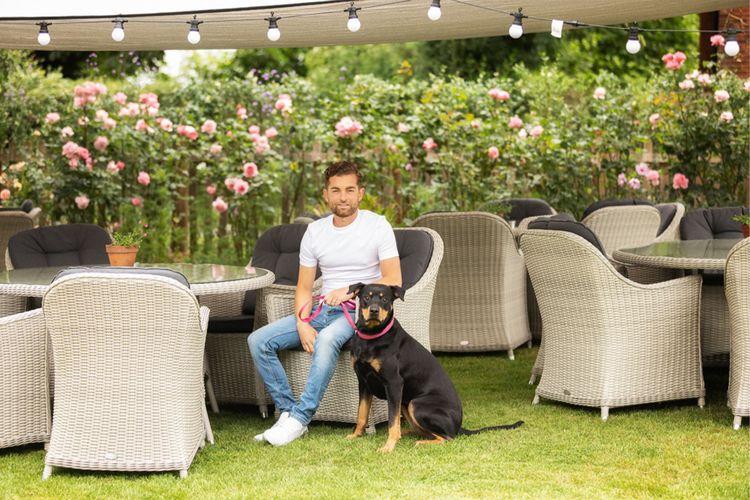
Ask Dogtor Adem: how can I stop my dog barking at the pub?
5 minute read
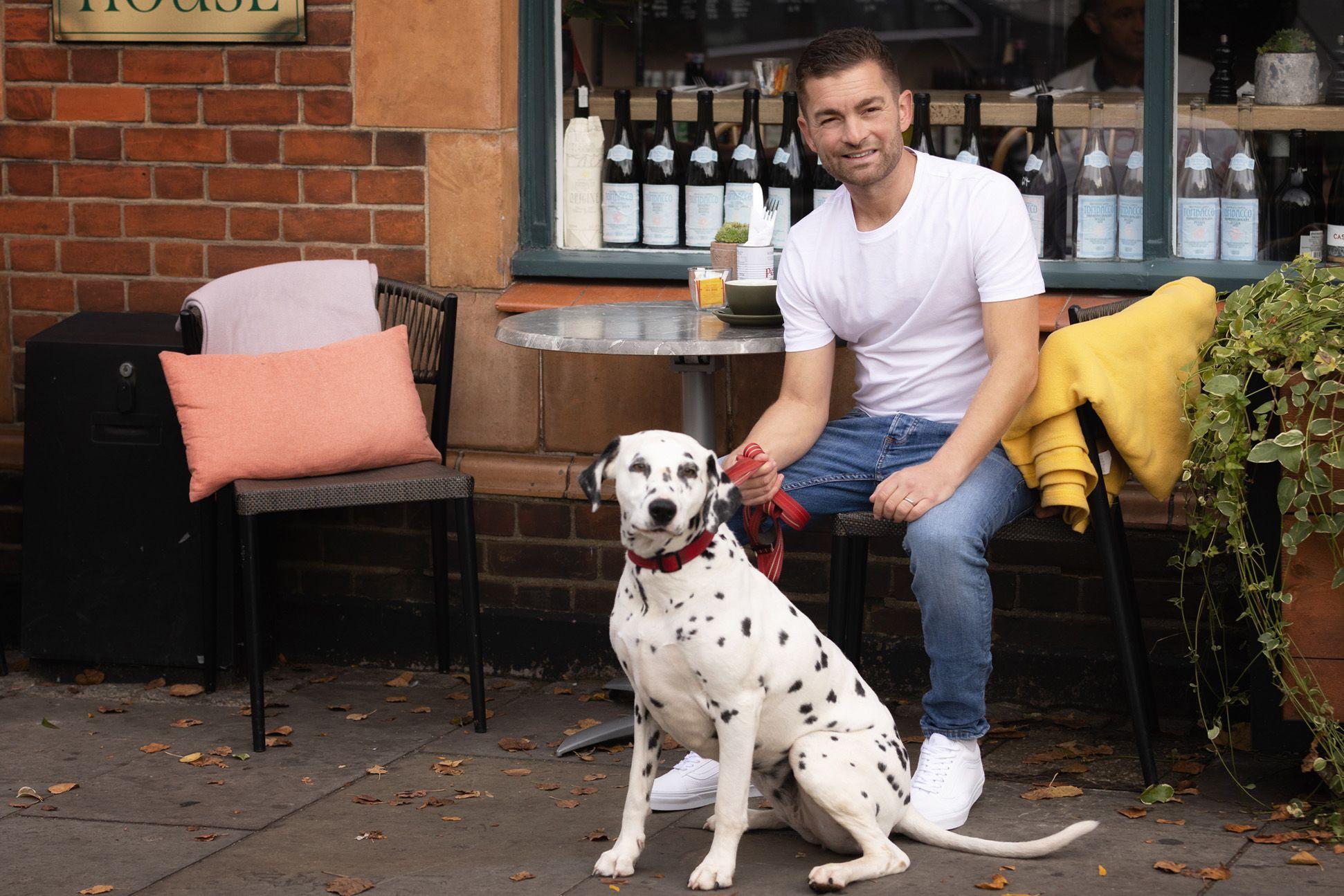
Why is my dog barking?
In order to get your dog to settle, rather than bark, it's important to consider why they're barking. There are a number of different types of bark, and I have outlined the most common types of bark you might be experiencing below, so that you can start to think about and decipher the ‘why’ for your individual dog.
Alert barking
Alert barking is typically triggered by something your dog has been startled by or is making you ‘alert’ to. This could be someone walking towards you, an item being dropped, or maybe even a piece of furniture moving. This type of bark does not usually last long. Outside of the context of being at the pub, you might find a dog alert barks at the doorbell or someone walking down your gravel driveway.
Excitable barking
Pretty much what it says on the tin! Your dog is excited and is barking to let you know about it.
Attention barking
I also call this ‘instigation barking’ – your dog is barking as they want you to give them something! This could be your full attention, affection, food, a toy or to play, or they might even be trying to get you to carry on walking to another location with them.
Nervous or fearful barking
This is where your dog is telling you that they are overwhelmed with the current situation they are in, and it is too much for them. This could be because of the environment as a whole, or perhaps a particular trigger such as another dog or people they don’t know.
If you are unsure which type of bark matches the barking you are experiencing from your dog, an experienced behaviourist can help you with this. That way you can start to put the correct plan in place for your individual dog and scenario.
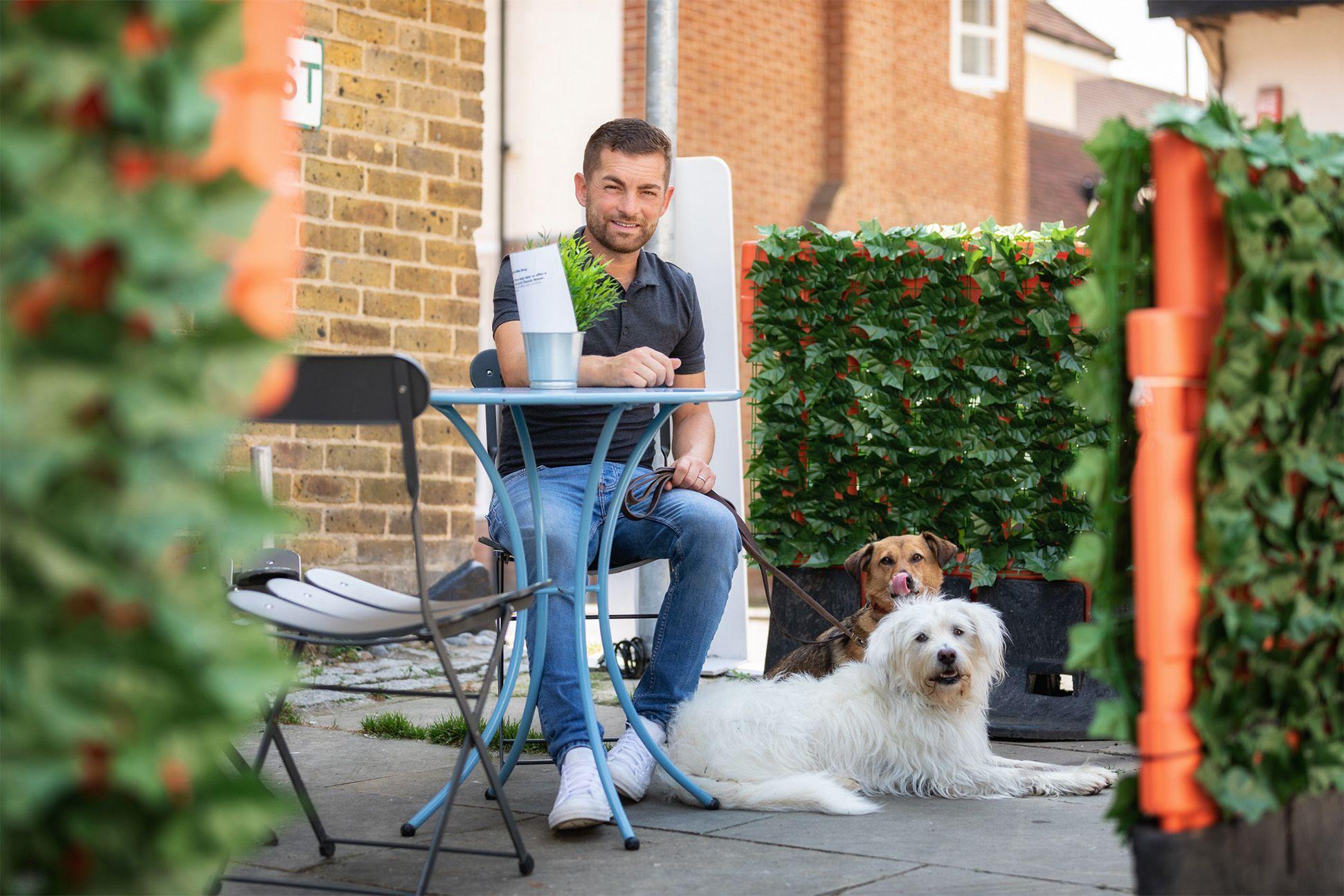
Creating a plan
Once you have deciphered your dog’s bark, you can start to formulate a plan to overcome this. The ‘why’ behind your dog’s barking will affect the way that you approach your training, but here are some pointers to get you started and to help your dog to settle at the pub, in a café, a restaurant or any other dog-friendly venue that you’d like them to feel relaxed in.
Exercise can calm the body and mind
We have all heard of the mental and physical benefits of exercise for humans, and the same can be said for our dogs. Constructively exercising your dog before visiting the pub can help them to release pent up energy, give them a chance to express natural behaviours, it can be a great stress reliever, and of course also offers them the chance to go to the toilet – all things that might be harder to do whilst at the pub!
A constructively exercised dog is more likely to be able to rest and relax at the pub or any other venue, than one who is raring to go. And this in turn can reduce the likelihood of unwanted barking.
Choose exercise that both you and your dog enjoy, and exercise that is tailored to their individual needs for their breed type and for their age. My labrador Bertha is high in energy, so we start with brisk walking before progressing onto a game of ‘fetch’ or ‘find it’ using her favourite toy – a ball. Other dogs, however, might need a short and slow lead walk around the block, and others might prefer to join you on a jog!
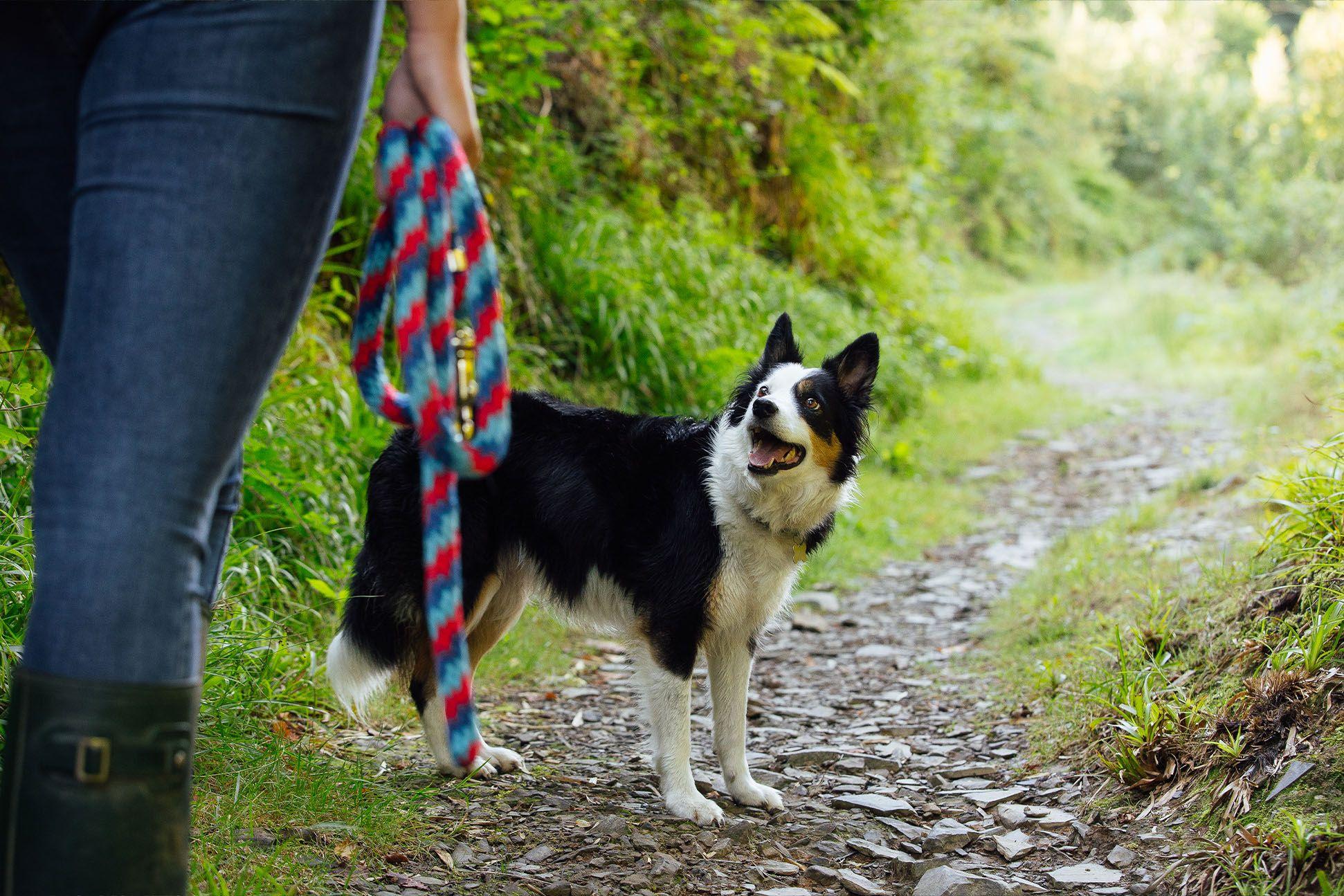
Gather up your ‘tools’
By having the correct items in place to encourage your dog to settle, you will already be making progress towards a peaceful trip to the pub! I like to take a comfy travel bed or blanket (you’d probably be unsettled too if you had to sit on a cold floor), easily accessible treats (I like to use an easy-access treat bag), and some food dispensing toys that encourage laying down and settling. This could be a lick-style mat and an easy fill rubber food dispensing toy. If you can prefill these with tasty foods they enjoy, even better.
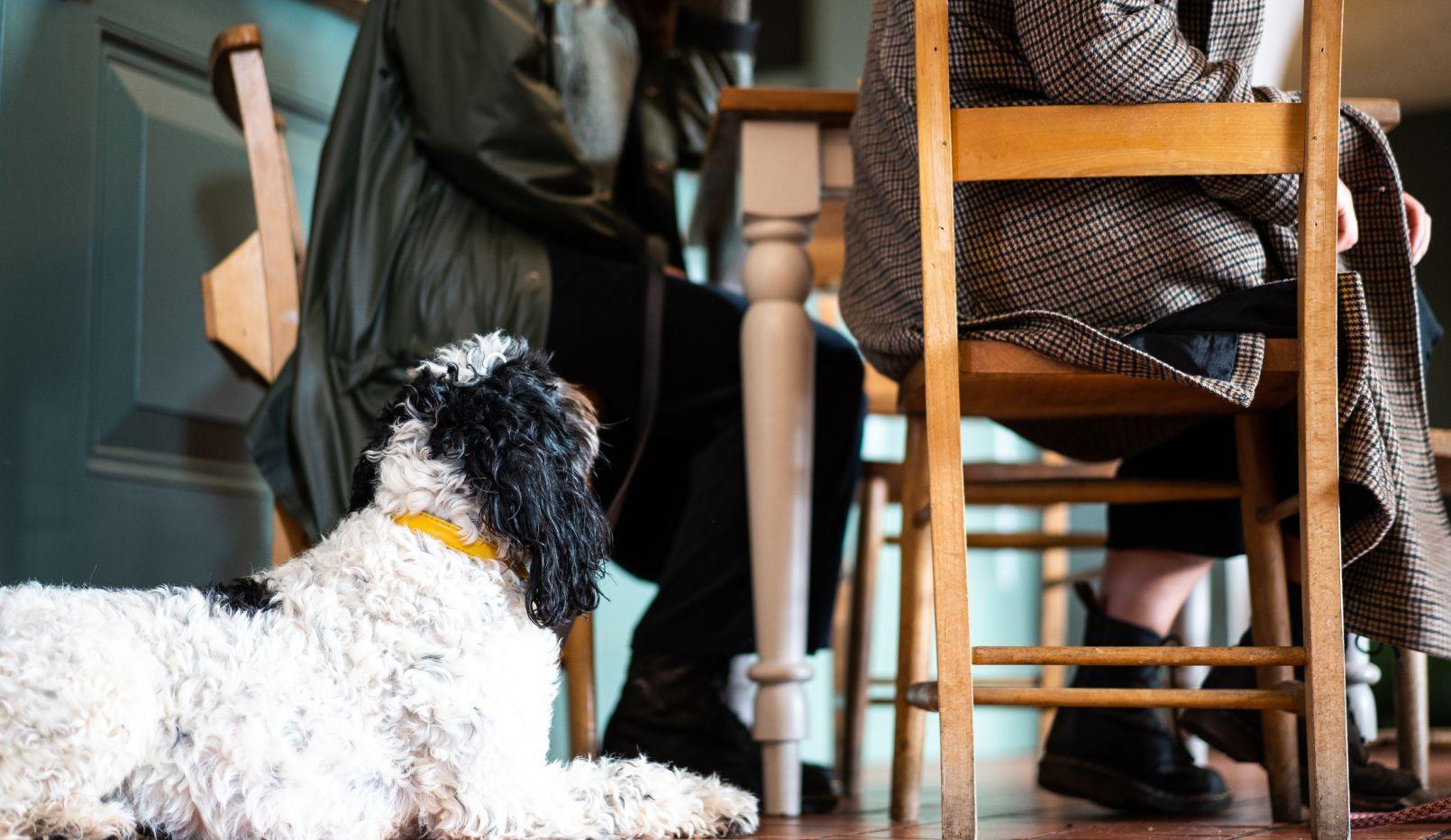
Choose a quiet time of day to practice
It’s important that you give your dog the opportunity to practice and be successful at settling at the pub. To start your training, it is helpful to initially choose a quiet time of day to visit. Start on the periphery, allowing your dog to observe and become accustomed to their surroundings. It may be that this is all they can cope with for this first session (or more!) and that is totally fine. Make sure to stay at a distance that they feel comfortable and praise quiet and confident behaviour with your voice, affection, and a tasty treat.
If your dog is able to cope with a little more, you can make your way further into the venue, but I would still suggest sitting on the outside, away from the thick of it for these first few sessions. At least until you can be sure that your dog is able to relax and settle. A quiet spot in the garden area of a pub can be a great starting point for your training, as can grabbing a drink that is easy to take away so that you can prioritise your dog and leave early if necessary.
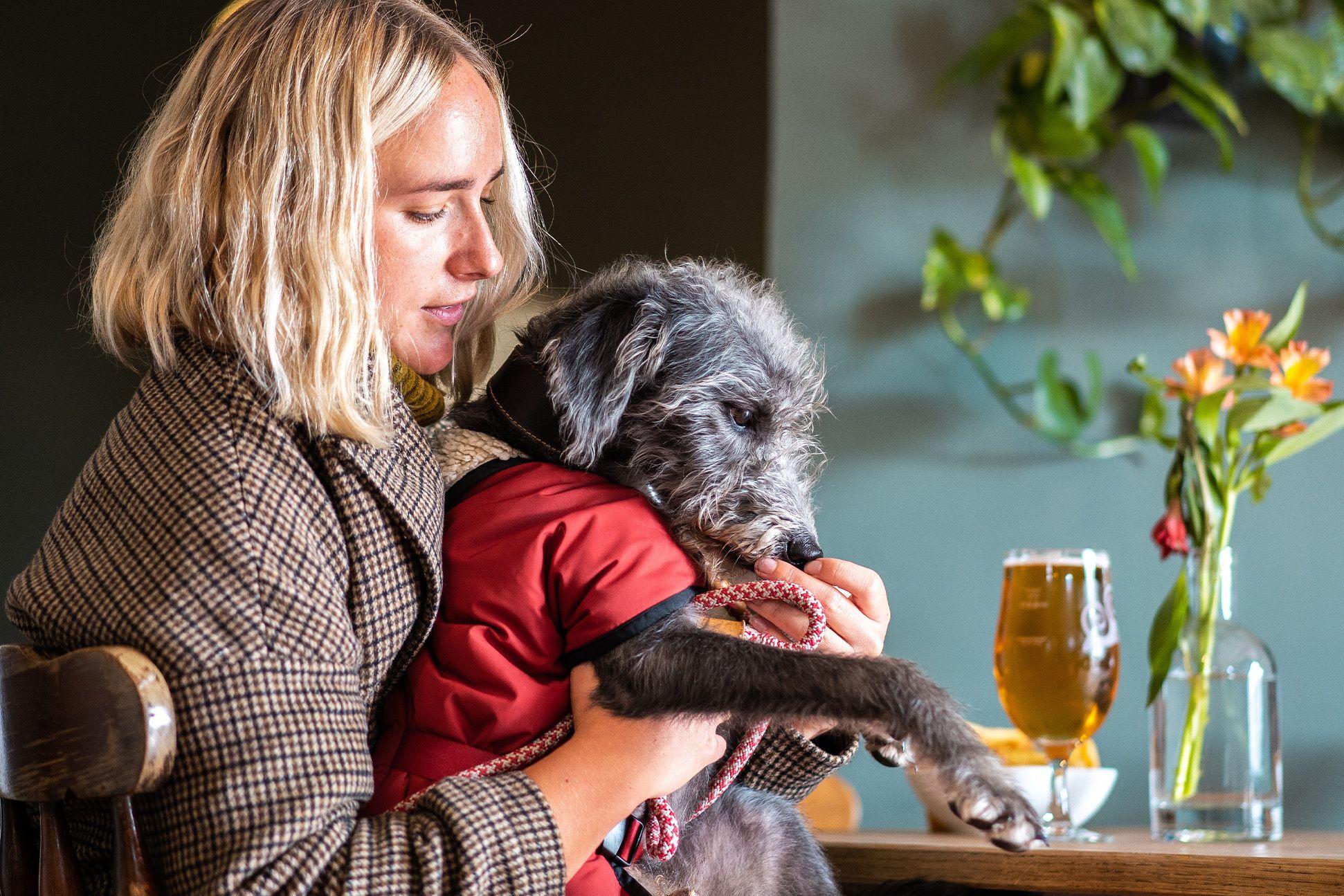
Make the experience positive
This can help to make it easier for your dog to relax and settle. Lay out their comfy travel bed or blanket and pop down a food dispensing toy for them to enjoy. You can also give your dog treats by hand or scatter feed them treats on their bed area to help create positive associations, praise calm and settled behaviour, and also build confidence in situations that they might have been previously worried about.
Keep practice sessions short and sweet
It’s important to end on a good note and so, to begin with, I would recommend keeping your sessions short and sweet. You want to leave with your dog in a calm and confident frame of mind, with no barking having occurred. Their body language and behaviour should also indicate that they are relaxed.
This might initially mean you only spend five to ten minutes at the pub. For some dogs it even might mean just a few minutes on the very outskirts looking in. Don’t despair, patience is key here, and over time you can build on this, building on their experience, tolerance and confidence, so that you can eventually enjoy more time together in these environments.
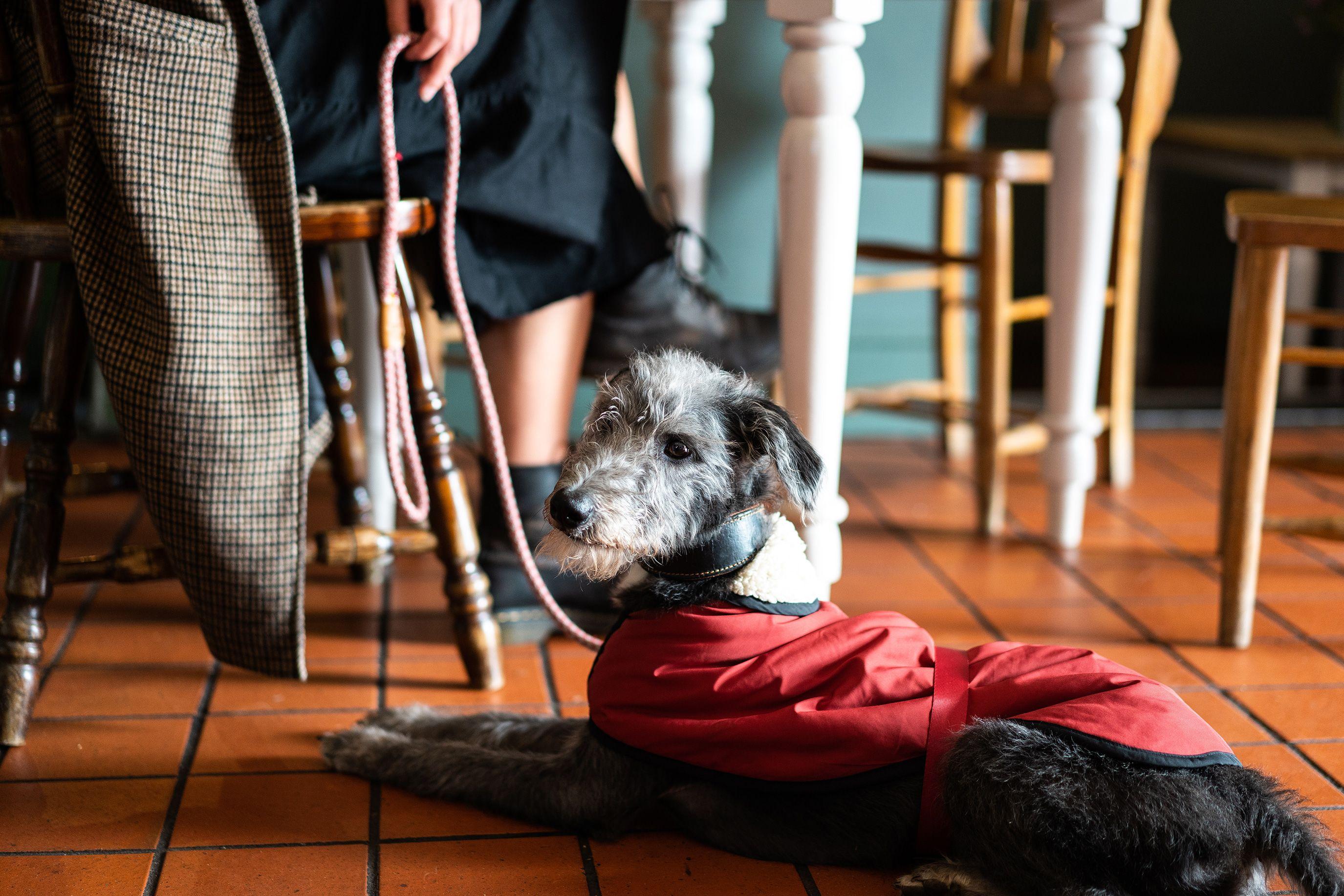
To conclude...
Remember, these are just starting points and your individual dog’s temperament, character and needs will play a huge role in deciding what specific training is best for your dog. Whilst some owners might find that these tips offer a quick fix to the deafening barking, others are likely to need to work on this issue over time to fully resolve the barking they are experiencing. Especially if this barking stems from fear, anxiety or nervousness.
Don’t be afraid to reach out to an accredited and experienced behaviourist for support who can look at the bigger picture, help you to unpick the finer details of your dog’s behaviour, and put a bespoke plan in place for your individual dog.
I hope you have found my tips useful. Here’s to creating more memories with your dog!
Dogtor™ Adem